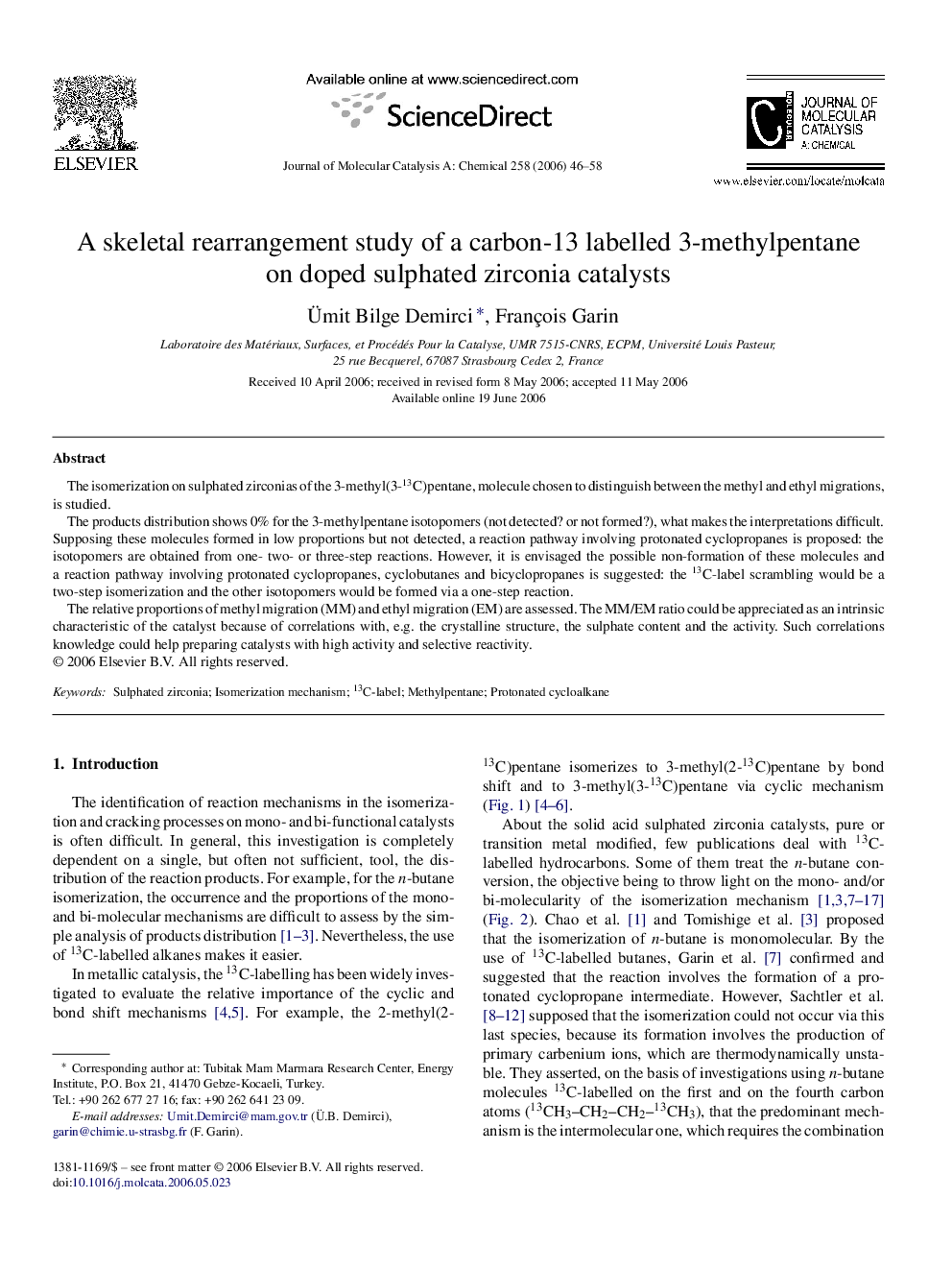| Article ID | Journal | Published Year | Pages | File Type |
|---|---|---|---|---|
| 68863 | Journal of Molecular Catalysis A: Chemical | 2006 | 13 Pages |
The isomerization on sulphated zirconias of the 3-methyl(3-13C)pentane, molecule chosen to distinguish between the methyl and ethyl migrations, is studied.The products distribution shows 0% for the 3-methylpentane isotopomers (not detected? or not formed?), what makes the interpretations difficult. Supposing these molecules formed in low proportions but not detected, a reaction pathway involving protonated cyclopropanes is proposed: the isotopomers are obtained from one- two- or three-step reactions. However, it is envisaged the possible non-formation of these molecules and a reaction pathway involving protonated cyclopropanes, cyclobutanes and bicyclopropanes is suggested: the 13C-label scrambling would be a two-step isomerization and the other isotopomers would be formed via a one-step reaction.The relative proportions of methyl migration (MM) and ethyl migration (EM) are assessed. The MM/EM ratio could be appreciated as an intrinsic characteristic of the catalyst because of correlations with, e.g. the crystalline structure, the sulphate content and the activity. Such correlations knowledge could help preparing catalysts with high activity and selective reactivity.
Graphical abstractThe 3-methyl(3-13C)pentane isomerization on modified sulphated zirconias could be a one-step reaction, where one or two carbon–carbon bonds could break, involving, e.g. protonated bicyclopropane as intermediate. The ratio between the proportions of methyl and ethyl migrations could be appreciated as an intrinsic characteristic of the catalyst because of correlations with its physical/chemical characteristics.Figure optionsDownload full-size imageDownload as PowerPoint slide
